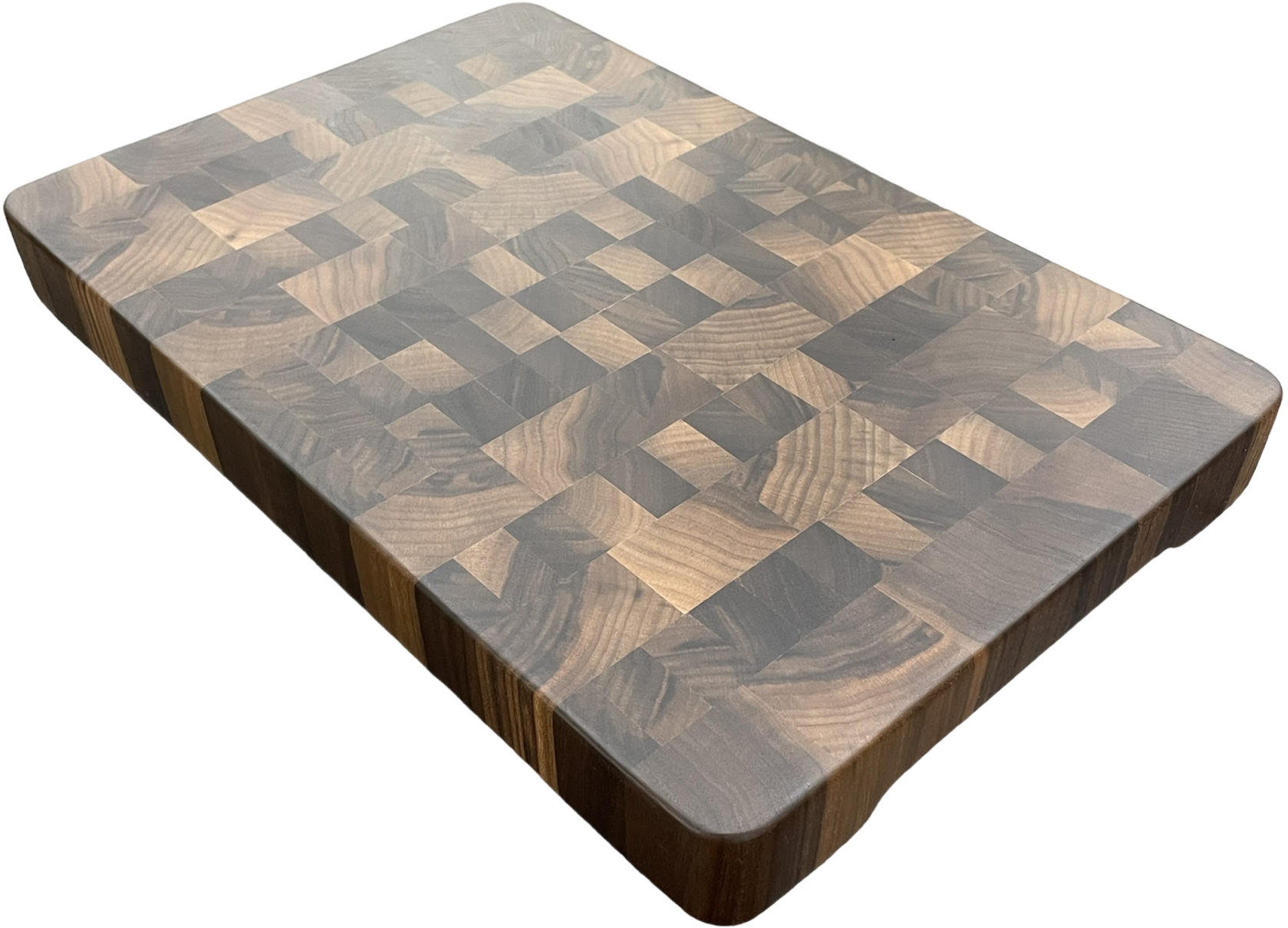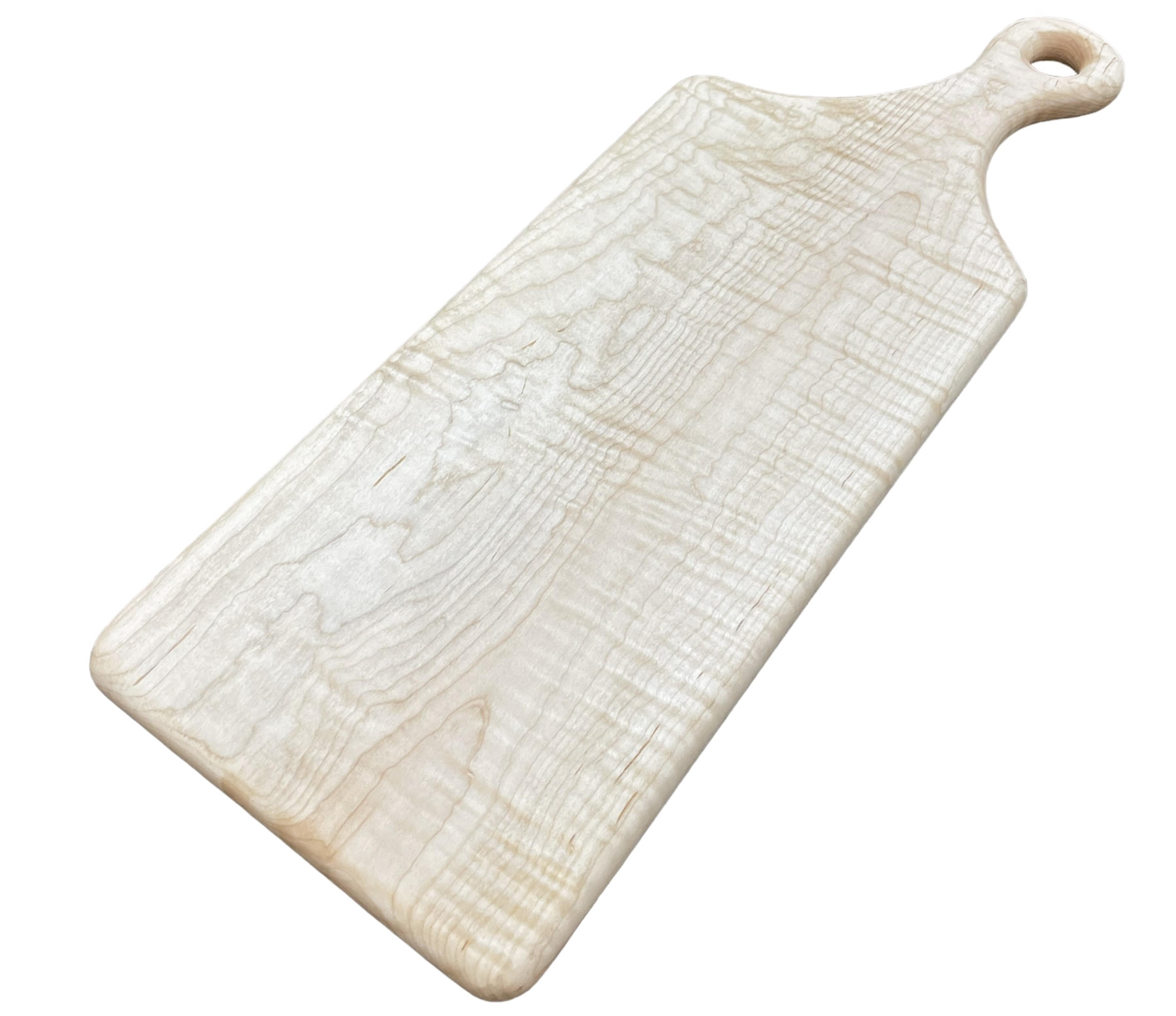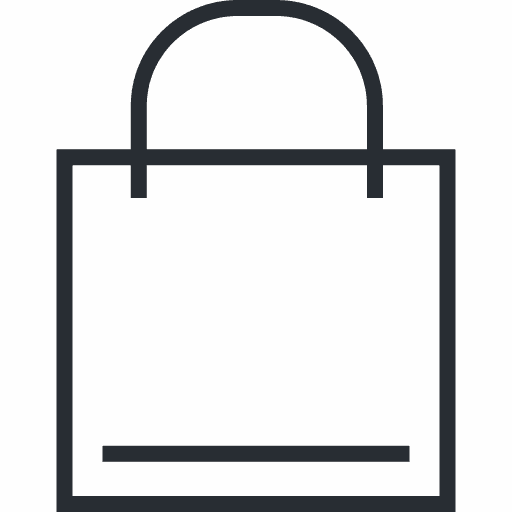
Charcuterie & Cutting Board Care Instructions
Caring for your new board
Here are some tips to help retain the quality of the wood.
- Wash your board with soap and warm water after use. After washing the cutting board, dry immediately with a towel and let it air dry standing up or on a wire rack to allow for air flow.
- Store your board in a dry area away from extreme hot and cold temperatures and away from direct sunlight. Prolonged exposure to water and/or heat can cause the board to warp or split. DO NOT:
- Put the board in the dishwasher.
- Soak the board in water.
- Lay a wet board flat to dry.
- Expose the board to direct sunlight. Natural light coming into your kitchen is great for you, but not for your board.
- Put your board in the refrigerator/freezer.
- Use bleach. This will stain the wood and/or excessively dry the wood.
MAINTENANCE
Your board will need oil to prevent the wood from drying out. The frequency will depend on how often you use your board. With regular use, the board will need oiling about once a month. If the board is only used as a display, you can oil it once every couple of months.
APPLYING OIL:
- Apply a liberal layer of food-grade oil to both sides, top, bottom, and any groove, grip, or handle. Be very generous; it should be borderline dripping. Protect your counters with newspaper or towels.
- Allow the oil to sit as long as possible; at least a few hours but overnight is best. While absorbing the oil, your board should be standing upright or on a wire rack.
- Using a clean cloth, wipe/buff off any excess oil the following day.
- For extra protection, apply a food-grade board wax after oiling. Using a clean cloth, apply the wax in a circular buffing motion. It isn’t necessary for the wax to soak in, so you can buff off any excess immediately after using a new clean cloth.
RECOMMENDED PRODUCTS:
- Oil: Food grade mineral oil, some coconut oils (like Caron and Doucet cutting board oil), butcher block oil, or hemp oil.
- Wax: Any food-safe board wax such as beeswax or carnauba wax.
- Your board comes finished with Walrus Oil Cutting Board oil and Walrus Oil Wood Wax.
- Do not use cooking oils such as vegetable, corn, olive, peanut, walnut, or sunflower, as these are rich in fats and will eventually oxidize and go rancid. You should also avoid tung oil and linseed oil.
ADDITIONAL CLEANING:
- Baking soda: You can safely use baking soda to remove stubborn stains from the board. Sprinkle baking soda over the offensive spot and rub with a cloth, brush, or sponge dipped in hot water.
- Lemon: If your board begins to smell, one of the easiest tricks is to cut a lemon in half and run it across the entire surface. The acid in the lemon both reacts with and oxidizes organic material (bacteria and fats) that are the cause of smells and stains. The natural lemon oil also forces any soluble materials to be removed.
- Vinegar: Because vinegar is acidic, it helps disinfect the board by killing bacteria and mold and preventing their further growth. It can also help deodorize your board. Spray the board with a solution of 4 parts water to 1 part vinegar and wipe it down with a washcloth or sponge.
With proper care, your board will last lifetimes. Your board includes one complimentary refresh - sanding and recoating. Additional refreshes are available for a fee. Shipping charges are the responsibility of the owner. Please reach out for more details.

